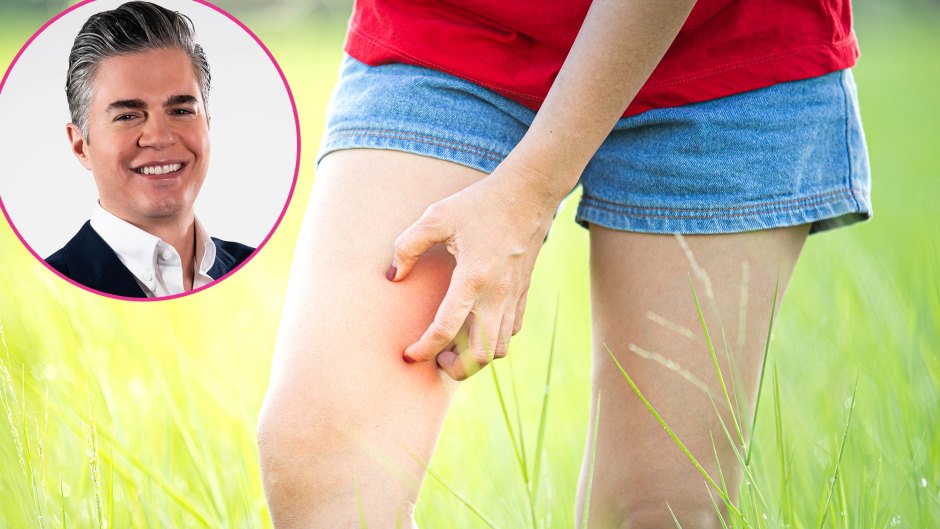
Shutterstock; Courtesy of Dr. Will Kirby
5 Expert Tips to Heal and Prevent Skin Chafing This Summer
Welcome to your skin check-in with Life & Style’s resident health and beauty expert, Dr. Will Kirby, a celebrity dermatologist and Chief Medical Officer of LaserAway. Every week, he’ll be spilling his candid thoughts and professional advice on all things skin, beauty and wellness as it relates to you — and your favorite stars.
Skin chafing refers to superficial irritation of the skin often caused by physical forces. Skin-to-skin contact or clothing-to-skin contact coupled with repeat episodes of incidental friction is the most common cause of skin chafing. Chafing most typically occurs on the thighs, the groin, the armpits and even the nipples. This week I reached out to the nation’s leading skin experts to discuss ways to prevent and treat skin chafing! Check out these tips:
1. Dress Right
“Wearing the right clothing can make a huge difference in the prevention of skin chafing,” says dermatologist Dr. Deanne Mraz Robinson. “Wearing breathable cotton undergarments during the day and donning looser, moisture-wicking, seamless clothing while exercising will help tremendously. Also consider sleeping in a cool room, with lightweight cotton sheets, and completely naked – your chafed, irritated skin will thank you!”
2. Stay Dry
“Chafing can be worse in hot, humid environments and although it can be very difficult to accomplish in hot weather and especially while exercising, staying dry is a great way to prevent certain types of chafing,” finds plastic surgeon Dr. Gaurav Bharti. “So consider using an antiperspirant before exercising or working outdoors during the summer and always immediately dry the area with a clean towel after sweating!”
3. Get In Shape
“While fit athletes can suffer from chafing, individuals experiencing obesity have a much higher incidence of irritating skin to skin contact,” acknowledges dermatologist Dr. Tejas Desai. “As such, losing weight via diet, exercise, and lifestyle modification or even surgery to minimize the surface area where chafing occurs should be a discussion point in heavy patients with a history of chafing.”
4. Lubricate
“You can pre-treat to prevent chafing with a high quality moisturizer like Skin Medica’s Rejuvenative Moisturizer before chafing even starts,” says dermatologist Dr. Merrick Elias. “But if chafing has already set in then consider applying a thick coat of Aquaphor three times a day. This will heal the irritated skin and minimal future friction.”
5. Seek Professional Care
“While chafing is typically minimal and easy to treat, on rare occasions it may be severe and a frictional or mechanical ‘burn’ may develop,” notes dermatologist Dr. Alpesh Desai. “If you have suffered from repeated episodes of chafing or have active chafing and notice prolonged pain, significant redness, crusting, bleeding or a discharge, you may need professional care so seek medical attention from a skin expert as an infection may be occurring.”
So there you have it! The skin experts have spoken! Prevent and treat skin chafing by avoiding moisture and friction and if you develop chafing, follow these expert tips to heal it quickly!





































